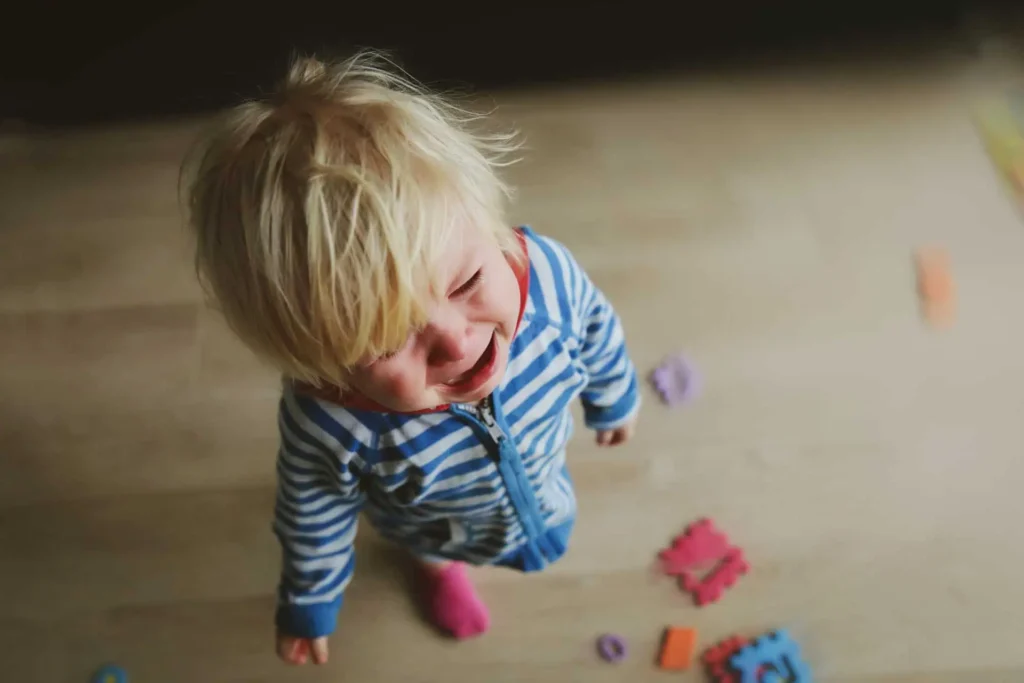One of the biggest misconceptions is that baby and toddler teeth are not as important because they “just fall out anyway.” This sentiment is misguided. You can actually start your child's oral care routine before they even have teeth! While you're waiting for that pearly little bump to appear in your wee one's gums, here's how you can promote healthy, strong chompers for decades to come.
Baby and toddler teeth
Baby teeth preserve the spacing for permanent teeth, and if not cared for properly, they can decay and lead to gingivitis, which can affect the spacing of the permanent teeth.
Believe it or not, you can start cleaning your baby’s mouth as early as a few weeks after birth. Use a clean, damp washcloth to gently wipe the gums. Do not use toothpaste until your child has teeth. Once teeth have begun to appear, use a very soft-bristled, child-size toothbrush with a smear of toothpaste twice a day; if teeth are touching, make sure you also gently floss on a daily basis. Be sure to follow these tips:
- Don’t put your baby to bed with a bottle of milk, formula or juice. While these drinks may be healthy, they contain natural sugars that are still sugars that will stick to your child’s teeth and increase the chance of a cavity forming.
- Don’t leave a bottle in your child’s mouth for a long period of time, especially if he or she is not feeding from it.
- Give your child water after every meal or bottle feeding. If water is not available, wipe a damp washcloth over their teeth.
Preschool and school-ager teeth
After the age of three, you can increase the amount of toothpaste used to pea-size, while reminding kids to try not to swallow. They still need to be supervised, but by age four or five, they should be getting the hang of brushing correctly (in a circular motion for two minutes, twice a day).
Around age six, a child’s baby teeth loosen as their roots begin to dissolve, making way for the secondary or “adult” teeth to come in. As exciting as this milestone is, be sure not to yank the tooth out if it’s not ready; it could lead to infection. Just encourage its progress by wiggling it. Sometimes, it can take months before a loose tooth falls out; other times a loose tooth can come out with a bite of food. Your child might even swallow it! But rest assured, there is no harm if that happens.
Right when you thought your child’s teething stage was over, here it comes again—though thankfully less painful and dramatic. Be prepared for some complaints of pain in the back of the mouth and even up the jaw line; these are the six-year molars poking through that are not replacing baby teeth. Have some fruit popsicles and ice cold water handy to help ease the discomfort. Child ibuprofen is also safe.
Tween and teen teeth
As your child gets older, they begin to take greater pride in their appearance, but they seem to miscalculate the work it entails to maintain a healthy smile. Add in their newfound independence and social lives and they’re just too busy to be giving extra attention to their teeth. But did you know that dental decay is the most common chronic disease in young people between the ages of five and 17?
Thorough brushing and flossing help remove food particles and plaque from smooth surfaces of teeth, but toothbrush bristles cannot reach all the way into the grooves to remove food and plaque.
Your dentist may suggest dental sealants, a plastic material that is applied to the chewing surfaces of the back teeth (premolars and molars) to act as barriers to prevent cavities. This is where decay occurs most often, and sealants protect these vulnerable areas by ‘sealing out’ plaque and food. They are very easy to apply. Your dentist or dental hygienist just paints them onto the tooth enamel where it bonds directly to the tooth and hardens. They can last up to several years.
Dental sealants don’t eliminate the need for check-ups though. Schedule regular dental visits to ensure the sealants don’t need to be reapplied and that no other dental issues are arising.
Anaida Deti is a registered dental hygienist and the CEO of Dental-X Smile Centres in Toronto. Follow her on Twitter @dentalXSmiles.
Originally published in ParentsCanada magazine, April/May 2016.










